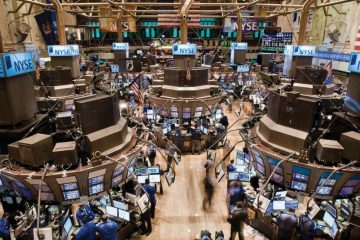Buffett’s Market Indicator Flashes Red, Prepare To Sell
With each passing month, it’s becoming evident that the current bull market has slowed from a gallop to a trot.
The S&P 500, which rose 29% in 2013, will likely trail such a gain this year, as it is up only 7% in 2014 as of September 15. And by one key measure, the bulls advance may cease altogether, potentially resulting in a market reversal.

Make no mistake, the market has been in rally mode for more than five years in large part due to the Fed’s easing hand, which is fueling ultra-low interest rates and ample liquidity for stock buying. Yet it’s always wise to keep an eye on traditional market metrics, in case the market starts to become fully disconnected from the fundamentals.
Each investor can focus on their own sense of fair value. For example:– Some investors like to compare the dividend yield on the S&P 500 to federal fund rates. The current dividend yield stands at around 2%, higher than short-term interest rates. Still an eventual upward move in short rates will pressure this valuation gauge.
— Other investors like to see how stocks are trading in relation to their private market value (i.e. what they would likely fetch in a buyout). Private equity historically acquires mature business at 4-to-6 times trailing cash flow, and growth businesses at a somewhat higher multiple. Fully 83% of the companies in the S&P 500 are trading for more than eight times trailing cash flow.
— Other investors like to focus on EPS growth. Per share profits have been enhanced in recent years by massive share buybacks — a trend that may not last. If buyback activity cools, underlying net profit growth will come into greater focus. Many companies in the S&P 500 are seeing profit growth slow to less than 10% as the low-hanging fruit of streamlining efforts disappear.
Warren Buffett has an easier way to gauge the valuation of stocks. He thinks that the combined value of all stocks — as measured by the Wilshire 5000 Total Market Index — should be worth less than the Gross Domestic Product (GDP) of the U.S. economy. And this ratio has typically generated a sell signal whenever it gets out of whack. It happened in 2000 and again in 2007, and though the market marched higher after crossing that threshold, the 12-to-18 month outcome was fairly bleak.
Unfortunately, we’re back into the danger zone. The stock market’s total value surpassed GDP in March 2013, and is already beyond the point it stood in early 2008, just before the last major market pullback. As this chart from financial blogger Doug Short shows, the market is now more than 15% overvalued, at least according to Buffett’s gauge. This gauge actually rose above 135% in 2000, and the dot-com melt up turned out to be a painful experience for most investors.

To be sure, “this time is different” is a mantra that you’ll hear on Wall Street trading desks. These traders suggest that corporate profit margins have never been higher and companies now deserve higher valuations.
Here’s the problem with that logic: Profit margins often peak in the early stages of an economic recovery as companies skimp on spending. Indeed work forces remain lean and capital spending has been depressed, but as an economy starts to strengthen, many companies amp up their rate of spending and profit margins return back to Earth.
Still, investors can remain bullish as long as per share profit growth remains robust. Will that be the case? It’s hard to know how the U.S. economy will be faring in 2016 and beyond as China, Europe and our own economic cycle remain as major question marks. But we can at least gauge EPS trends before then. According to Factset Research, the projected earnings growth rate is 7.3% for the S&P 500, rising to 11.5% in 2015. Double-digit profit growth will likely only happen if the U.S. economy grows at a 3% pace next year.
Many economists expect that GDP growth rate to be the case, though past expectations of surging GDP growth have repeatedly failed to materialize in recent years. If aggregated profits in the S&P 500 don’t reach $ 125 next year, then the market may start to look quite stretched as the price-to-earnings, or P/E, ratio of the S&P 500 index will have greatly exceeded the earnings growth rate.
As it stands now, in tandem with Buffett’s GDP gauge, stocks appear to be 15-to-20% overvalued, using the market’s price/earnings-to-growth, or PEG, ratio as a guide. Again, the Fed’s liquidity spigot, coupled with ultra-low interest rates has justified the rally to this point, but investors are already starting to think about what stocks should be worth when liquidity ends and rates rise.
Risks to Consider: The biggest risk to this market is not the state of the economy or the general health of corporate profits. Instead, it is investor psychology, as the herd may shift gears all at once. Small sell-offs can morph into big ones if investors sense an impending stampede for the exits.
Action to Take –> The rest of 2014 will be a crucial period for stocks, as investors begin to anticipate a changing interest rate environment.
If the U.S. economy material strengthens in coming months, then solid GDP growth can offset the impact of rising interest rates. On the other hand, tepid GDP growth, paired with the Fed’s plan to slowly lift interest rates, could prove to be a big headwind for stocks. As a result, investors need to closely monitor corporate profit growth trends — earnings season is less than a month away.
You also need to assess how the market is responding to interest rate changes.

The 10-Year Treasury note may already be telling us something, as rates have backed up fairly quickly. A continued upward move in the 10-Year could spell real trouble for this bull market.

